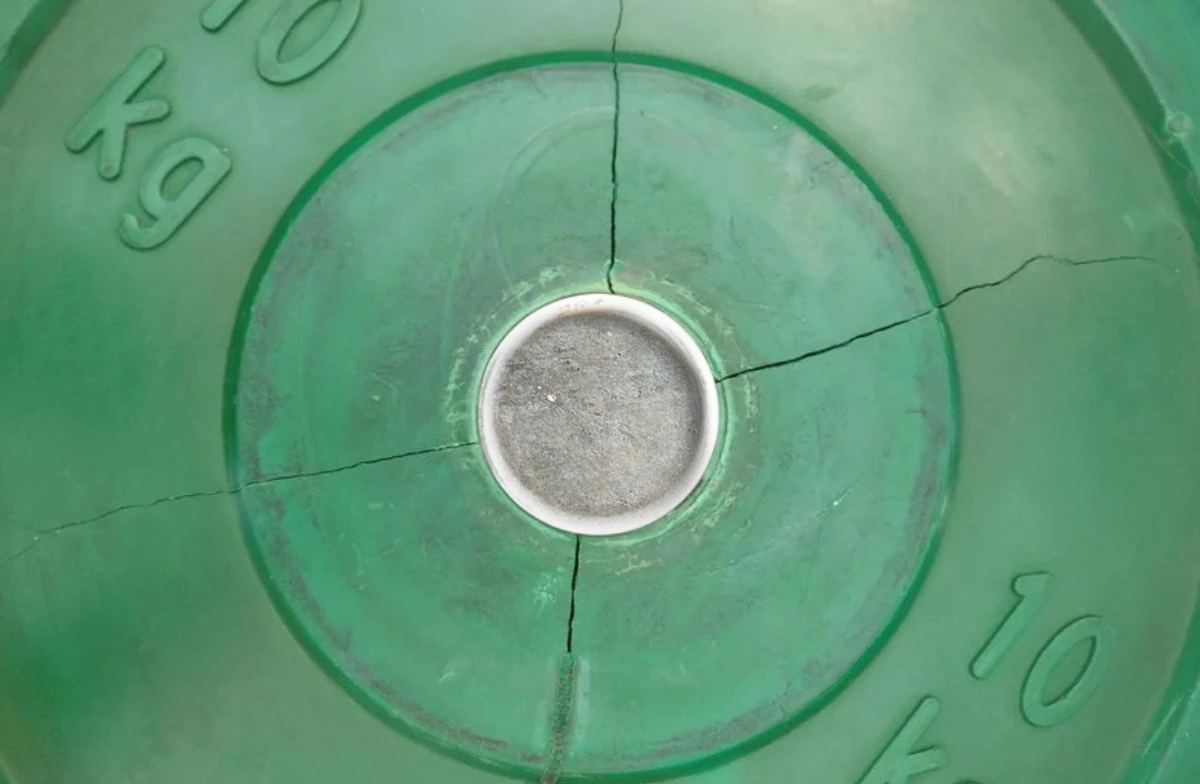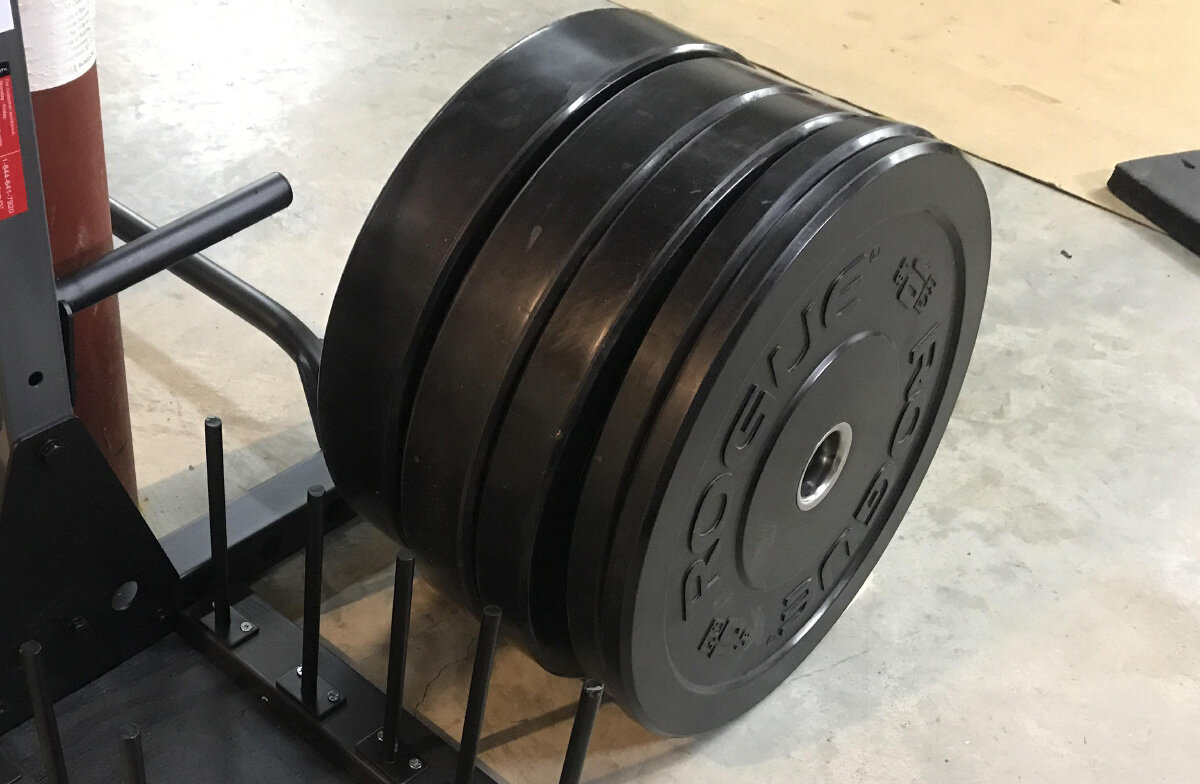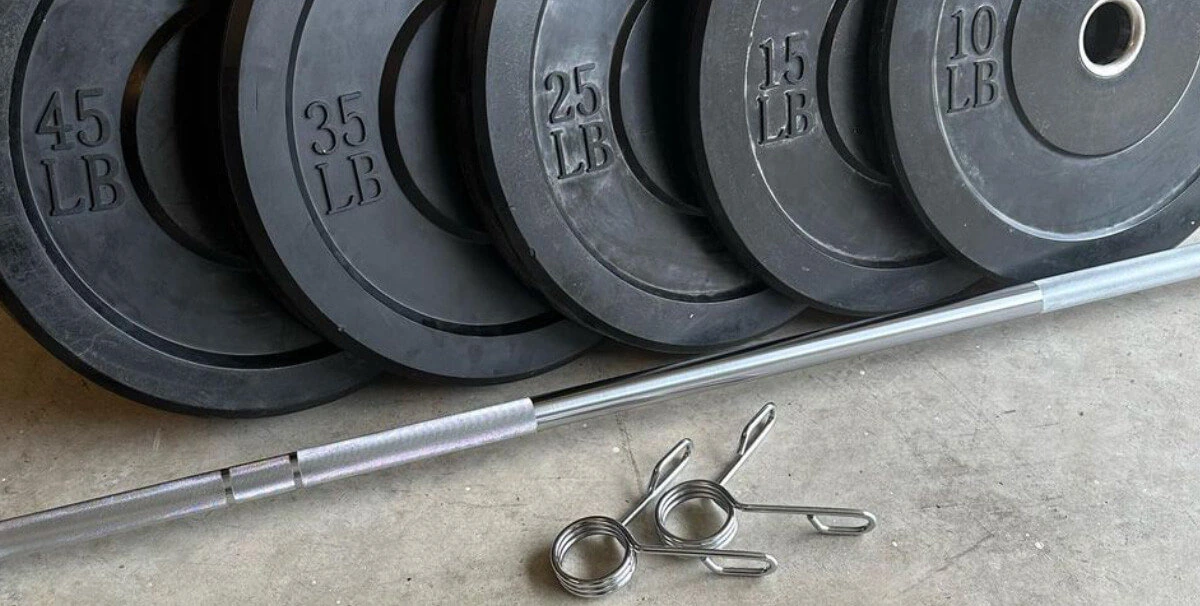When working out with bumper plates, you probably don’t give much thought to the flooring beneath your feet. But if you’re lifting in a garage or basement with concrete floors, you may wonder, can you drop bumper plates on concrete?
The answer is yes, but there are a few things to remember. Ensure the concrete is in proper condition and free of cracks or holes because they will get worse over time if weights are repeatedly dropped on them.
Also, remember that dropping heavier weights will cause more wear and tear on the floor. If possible, use rubber mats or deadlift paddings to help protect both the bumper and the concrete floor.
If you follow these precautions, you won’t have to worry about damaging your floor during your workout. Additionally, I will discuss a few other things you should know before dropping bumper plates on concrete.
Can the bumper plates damage concrete?
If you’ve ever worked out with rubber weight plates, you know that the plates can get pretty banged up. And if you’re constantly dropping them on the ground, it’s only a matter of time before they start to chip and crack.
But what about concrete? Can the plates damage it when they’re dropped?
The short answer is yes; they can. Bumper plates are made of rubber; over time, the rubber can start to break down.
When this happens, the metal ring in the center can become exposed. If this metal ring hits concrete, it can chip and crack.
In addition, the weight of the plates can cause the concrete to break down over time.
So if you’re regularly lifting weights at home, it’s important to be careful where you drop the plates.
A deadlift pad or lifting platform can help to protect your flooring and prolong the life of your bumper plates, which is what most people desire.
Do bumper plates get damaged if dropped on concrete?

Bumper plates are one of the essential pieces of equipment in any weightlifting facility.
They are made of thick, durable rubber that can withstand years of heavy use. However, many wonder if bumper plates can be damaged if they are dropped on concrete frequently.
The short answer is yes. Bumper plates can be damaged if they are constantly dropped on concrete. The rubber can crack or break, which can cause the steel core to become bent or split.
However, it is important to note that not all bumper plates are created equal. Some are made with stronger rubber than others, and some have thicker steel cores.
If you are concerned about damaging your bumper plates, it is best if you create or purchase a deadlift platform that will help protect both your bumper plates and your flooring.
The best way to protect bumper plates on concrete
You can protect your gym equipment and floors by taking a few simple steps before lifting weights. The following are a few things to keep in mind:
Lifting platform
A lifting platform can help to protect your weight plates by absorbing the impact of the drop and preventing damage to the plate and floor.
The platform will also raise the plates off the ground, reducing the likelihood of them cracking the concrete.
In addition, a lifting platform can provide a stable, level surface for your weights, which is essential for proper form and safety.
A platform is a simple and inexpensive way to extend the life of your bumper plates and keep them working like new ones.
Deadlift pads
No one likes the sound of a bumper plate hitting the ground – it’s loud and can be quite unpleasant. Not to mention, it can damage your concrete floor over time.
That’s why using deadlift pads is a great way to help protect your floor and extend the life of your bumper plates.
Deadlift pads are made of thick, durable foam that absorbs the impact of a dropped weight.
They also have a textured surface that helps keep the plate from sliding around. Best of all, they’re easy to use and don’t require any special equipment.
Thick rubber mats/flooring
If you’ve ever worked with rubber bumper plates, you know how tough they are. Though they’re designed to be durable, even the strongest bumper plates can eventually crack or break if dropped on a hard surface like concrete for an extended period.
That’s why it’s important to protect your equipment using thick rubber flooring/mats. Rubber is an excellent shock absorber, which will help protect your bumper plates from the impact of being dropped.
If you decide to go with rubber mats/flooring, I recommend getting some horse stall mats.
In addition, thick rubber flooring is much quieter than concrete, so you won’t have to worry about disturbing your neighbors when working out.
Will dropping bumper plates on concrete decrease its lifespan?
Some people wonder if dropping bumper plates on the ground will shorten their lifespan.
While it’s true that dropping bumper plates on concrete can cause damage, it’s not likely to significantly impact the plates’ overall lifespan right away.
Generally, most manufacturers design their plates to withstand repeated drops from a reasonable height.
So, if you’re worried about damaging your bumper plates, don’t worry about using them as intended – just ensure to use a mat or choose one of the methods mentioned above to protect your bumper plates.
How much weight can you drop on concrete?

Whenever you drop the bar from the top of the lift, you put a lot of force back onto the ground.
You risk chipping or cracking your concrete floor if you load the bar with multiple 45lb plates. Ensure that your concrete floor is capable of handling the force and weight you intend to apply to it.
One way to test this is to use a weight that is a fraction of the total weight that you will be lifting. For example, if you are lifting 500lbs, you can drop a 50lb weight onto the floor to see how much force it can withstand.
If the concrete cracks or chips, then you know that it can’t bear the full weight, and you need to find a different surface to perform weightlifting.
Is Dropping Bumper Plates on Concrete floor Safe?
The short answer is yes; bumper plates are designed to be dropped on a hard surface which is why they have a rubber coating.
Moreover, they’re often used in CrossFit competitions where athletes perform movements like power cleans and snatches. Bumper plates absorb the shock during a drop without damaging the barbell, weights, or floor.
However, it’s important to note that bars loaded with heavy bumper plates can crack concrete if dropped repeatedly.
So if you intend to do a lot of drops with heavy weights, it’s best to lay down rubber mats or a lifting platform first.
The Verdict
Dropping bumper plates on concrete can cause damage to both the floor and the plates themselves. However, you can avoid most of this damage with a few simple precautions.
In order to prevent damage, you should use thick rubber mats (horse stall mats) and deadlifting pads, or you could also create a lifting platform to absorb some impacts and extend the life of your bumper plates.
In addition, Before dropping anything too heavy, test your floor’s weight limit by a fraction of the total weight you will be lifting. You should be fine as long as there are no cracks or breaks!

